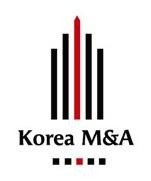Notice
Recent Posts
Recent Comments
| 일 | 월 | 화 | 수 | 목 | 금 | 토 |
|---|---|---|---|---|---|---|
| 1 | 2 | 3 | 4 | |||
| 5 | 6 | 7 | 8 | 9 | 10 | 11 |
| 12 | 13 | 14 | 15 | 16 | 17 | 18 |
| 19 | 20 | 21 | 22 | 23 | 24 | 25 |
| 26 | 27 | 28 | 29 | 30 | 31 |
Tags
- China
- OTCBB
- M&A
- case study
- Korea
- nda
- cgi korea
- Japan
- Investment
- taiwan
- hong kong
- China Construction Bank
- buyout
- acquisition
- CA
- LOI
- Malaysia
- Acquistion
- LOTTE
- Letter of intent
- private equity
- PEF
- Confidential Agreement
- securities
- Merger
- Japan Tobacco
- Korea M&A
- Bank
- capital gate
- sk
Archives
- Today
- Total
Korea M&A Corporation
Alllied chemical corporation 본문
Allied Chemical Corporation, one of the conglomerates formed in this period(1901-20), consolidated control over five different companies: General Chemical, Barrett, Solvay Process, Semet-Solvay, and National Aniline and Chemical. Although these firms clearly had different product lines, they operated in related business areas: General Chemical was a combination of 12 producers of sulfuric acid; Barrett sold byproducts of ammonia as well as coal tar products; Solvay Process was the country's largest producer of ash; Semet sold coal tar products; and National Aniline and Chemical Company was the nation's largest seller of dye-stuffs. Consolidated under the single aegis of the Allied Chemical Corporation, these various different production processes united under a single management structure. Thus, Allied was able to exploit the various economics that existed across these production processes and their related marketing activities.
Comments
